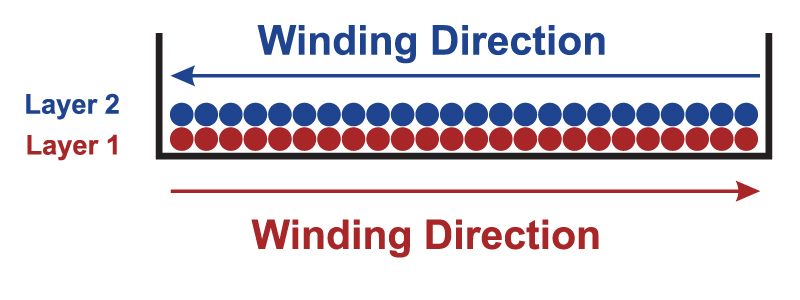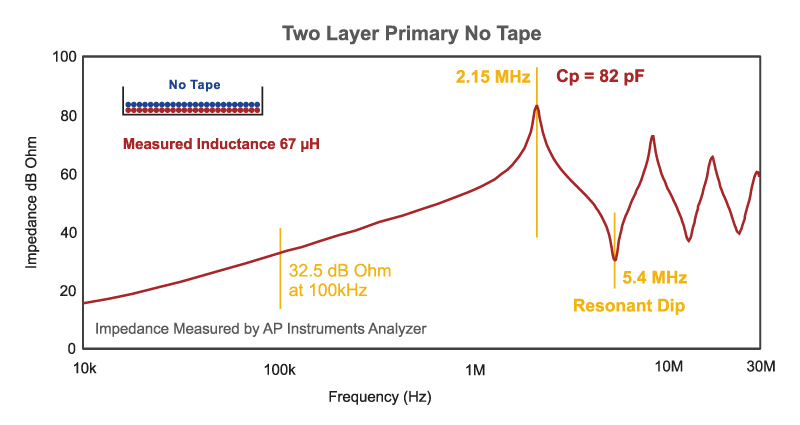[053] Flyback Transformer Primary Winding Structures

How to wind a flyback primary for the best possible performance.
Introduction
Dr. Ridley shows how the intricate details of magnetics construction can have a major impact on the operation of a flyback converter. It can have a tremendous impact on capacitance and the primary ringing waveforms of your converter.
Flyback Transformer Primaries
If you are designing a flyback converter, it is normally for a high-voltage input, and you do not need a lot of power – typically 10 watts or less. Space is always at a premium, and you want to keep the transformer as small as possible.
These common constraints often lead to a design with a small core, and many primary turns, often more than 100. The use of multiple winding layers cannot usually be avoided, and a decision must be made about exactly how to arrange the multiple layers of the winding. In this article, the case of a 130-turn primary, wound in two layers on an EPC19 bobbin from TDK will be considered. Three different winding configurations were built and tested.
Figure 1 shows the first configuration, where a 34 awg wire is wound out and back across the bobbin with no tape between the layers. This is the most common arrangement since a low-cost winding machine can be programmed to automate this layout very easily. It is also very easy to build manually for prototyping.
Figure 1: Flyback Transformer Two-Layer Primary with No Tape. This is the Maximum Capacitance Configuration.
Unfortunately, this is also the worst way to arrange a two-layer winding since it produces the maximum winding capacitance, and the maximum voltage stress between adjacent wires at the beginning and the end of the winding. Despite these drawbacks, most manufacturers wind this way, and most designers do not have the experience to insist on changes that can improve the performance.
Figure 2: Primary Impedance Measurement with Maximum Capacitance Winding Configuration, Two Layers with No Tape. Equivalent Capacitance is 82 pF.
Figure 2 shows the frequency response measurement of this transformer primary winding configuration. All measurements in this article were made with the AP300 frequency response analyzer, configured to measure high impedances, and transformer capacitances as low as 2 pF.







